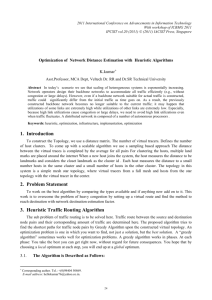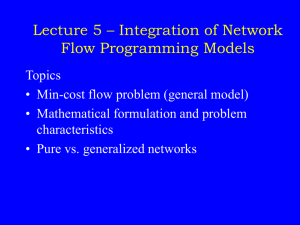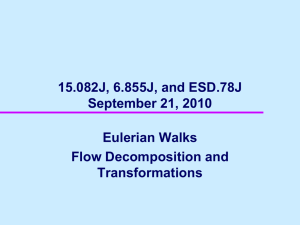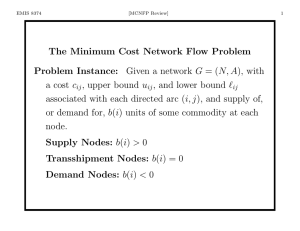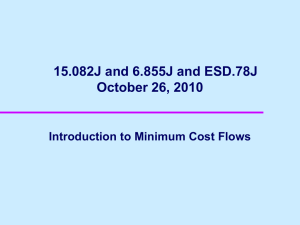Generic Minimum Cost Flow formulation SA305, Spring 2012 Instructor: Phillips
advertisement
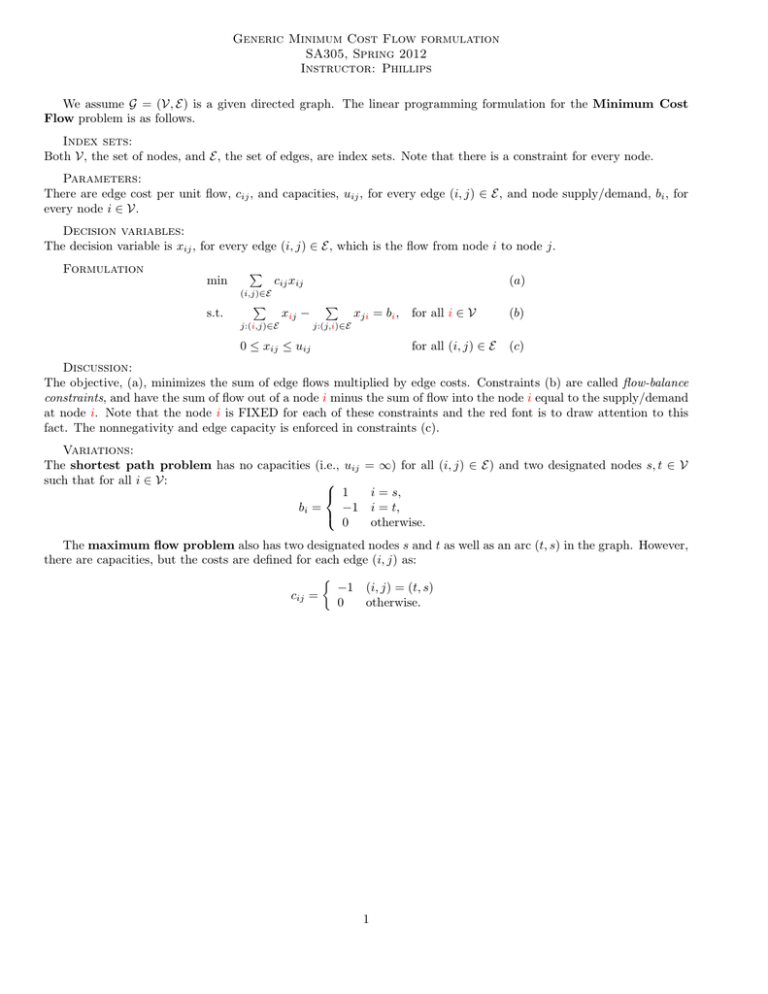
Generic Minimum Cost Flow formulation SA305, Spring 2012 Instructor: Phillips We assume G = (V, E) is a given directed graph. The linear programming formulation for the Minimum Cost Flow problem is as follows. Index sets: Both V, the set of nodes, and E, the set of edges, are index sets. Note that there is a constraint for every node. Parameters: There are edge cost per unit flow, cij , and capacities, uij , for every edge (i, j) ∈ E, and node supply/demand, bi , for every node i ∈ V. Decision variables: The decision variable is xij , for every edge (i, j) ∈ E, which is the flow from node i to node j. Formulation min P cij xij (a) (i,j)∈E s.t. P xij − j:(i,j)∈E P xji = bi , for all i ∈ V (b) j:(j,i)∈E 0 ≤ xij ≤ uij for all (i, j) ∈ E (c) Discussion: The objective, (a), minimizes the sum of edge flows multiplied by edge costs. Constraints (b) are called flow-balance constraints, and have the sum of flow out of a node i minus the sum of flow into the node i equal to the supply/demand at node i. Note that the node i is FIXED for each of these constraints and the red font is to draw attention to this fact. The nonnegativity and edge capacity is enforced in constraints (c). Variations: The shortest path problem has no capacities (i.e., uij such that for all i ∈ V: 1 −1 bi = 0 = ∞) for all (i, j) ∈ E) and two designated nodes s, t ∈ V i = s, i = t, otherwise. The maximum flow problem also has two designated nodes s and t as well as an arc (t, s) in the graph. However, there are capacities, but the costs are defined for each edge (i, j) as: −1 (i, j) = (t, s) cij = 0 otherwise. 1




